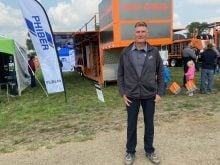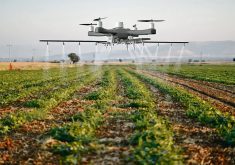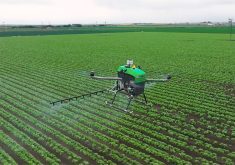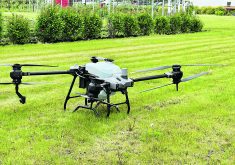The new high-tech 4G smartphones may have more features, but many people living in rural Canada complain that cell coverage with their new phone is getting worse instead of better.
The reason for the complaint is that coverage is, in fact, worse. Today’s high-speed data networks have increased bandwidth but smaller range. While the cell towers have enough power to talk to your 4G smartphone, your low-power handheld device doesn’t have enough power to talk back.
The result? Rural Canada, already plagued by poor cellular service, is getting worse service. The list of cellphone dead spots across rural Canada grows. Thankfully, there are a number of high-tech startup companies attacking this problem, among them InDro Robotics in Salt Spring Island B.C. Phillip Reece is InDro’s founder, chief engineer and chief executive officer. His business is drones, but that technology links closely to cellphone technology.
Read Also

India slaps 30 per cent import duty on yellow peas
India has imposed a 30 per cent duty on yellow pea imports with a bill of lading date on or after Nov. 1, 2025.
“The current C2 cell frequency doesn’t allow very great distances, so we’re working closely with Nokia to produce a cellphone corridor that allows you to fly your drone over longer distances beyond the visual line of sight. It greatly enhances the scope of field scouting a farmer can do with his drone.
Related stories in this issue:
“We can produce a cell corridor 86 kilometres long and five km wide with just one tower. We can add a relay tower about every 75 km to increase the distance. The towers don’t have to be big. And they’re not just for drones. They bring full cell service to everyone within that pattern. We tested it here at Salt Spring Island in November.”
Reece said gaining the co-operation of federal regulators has not been a problem. He admits that if farmers were requesting a green light for an innovation like this, it might not receive top priority. However, InDro Robotics is tying its project to the drone needs of first responders, which he said provides an extra incentive to Transport Canada and industry. It would not be good public relations for an organization to stand in the way of first responders.
“If a farmer asks for this, the reaction is that it’s just a business. If a first responder says this cellular corridor is a matter of life or death, things get done. Who wants to stand in the way of first responders.”
















